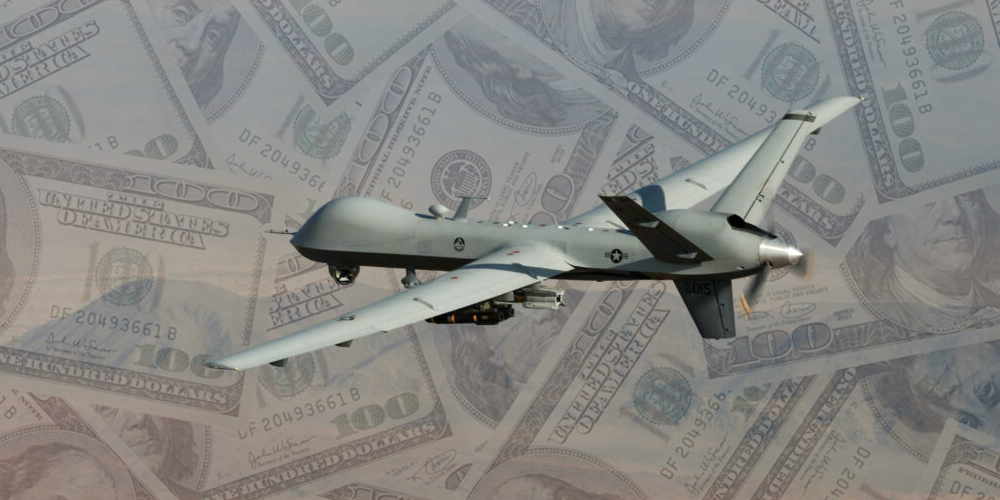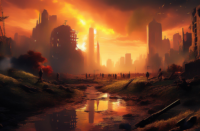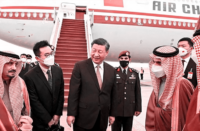The German military theorist Carl Von Clausewitz famously declared “war is a continuation of politics by other means”. Lenin, like all good Marxists, took this insightful analysis and added class to its understanding stating war as a part of class politics: “we understand the inevitable connection between wars and the class struggle.”Or as Mao put it: “War is the highest form of struggle for resolving contradictions, when they have developed to a certain stage, between classes, nations, states, or political groups, and it has existed ever since the emergence of private property and of classes.”
If war is an extension of the politics of class, property and wealth, then it is also a particular dangerous/opportune time when power and privilege are in decline or being challenged, as we have seen throughout history.
The US economically and politically today, although still the leading imperialist power, is not the same dominant force it was. Power is rebalancing globally and that makes today’s world particularly volatile.
An extremely conservative account of US military bases outside of US territory is 128 (based on a narrow definition), while a more accurate count is certainly over 300. China has 1 by a narrow definition and 3 more accurately. Russia has 14. The US has over 5,000 nuclear warheads, Russia also has over 5,000 and China has 500. The US, however, has the most deployed warheads and 100 of these are deployed in overseas military bases (Belgium, Netherlands, Germany, Italy and Turkey) strategically positioned toward Russia and China with two more countries due to host them shortly, in Poland and Romania. These latter countries’ move to host a US military base and nuclear warheads so close to Russia might also suggest a reason for recent meddling in Romania elections by Western forces. The US is the only country to use nuclear weapons on civilians, causing the death of 250,000 innocent people in the initial period after Hiroshima and Nagasaki.
The US has militarily intervened – in confirmed interventions – in over 30 countries in the last 70 years, affecting close to 1/3 of the people on the planet, and some of these countries have been repeatedly targeted, often in recurring decades. Close to half a million civilians have died directly from US military invasions since 2001 and this figure rises to over 3 million when indirect causes are included.
Today, the US is the world’s largest debtor nation, in dollar terms, owing in the region of 8 trillion USD (1/3 of its total debt) to foreign states, banks, companies and individuals. China is second only to Japan in terms of owning US debt and China’s share has grown rapidly. Being a debtor nation is not necessarily a problem when you are dominant and in control. However, it does become a problem when creditor states no longer wish to be subservient or seek to independently exploit or utilise that position of creditor. Hence, America had to build up its military might over time in conjunction with its economic and political power. Today, that military might is used by the US to protect its increasingly growing and obvious vulnerabilities. The gun, or the drone, is used to protect the dollar.
While globally wealth is still predominantly concentrated in the G8, with the US holding the largest share, this geographic wealth distribution is shifting towards several Asian and OPEC countries. The US has the highest number of millionaires with China now in second place ahead of Japan.
The US has 4 of the top 10 global energy companies. China now has 3. The US has 7 of the top 10 media and communications companies. 6 of the top 10 logistics and transport companies are American. However, the US now has only 2 of the largest 10 Banks in the world while China now has the biggest 4. While the US still dominates large sections of the global economy, this is changing and being challenged. Britian, France, Germany and Japan also feature strongly but so too do China and Russia. In a sense, the unequal exchange of trade, as it has existed for decades, is changing, hence the necessity for the US to utilise its global military infrastructure to maintain its dominant position and hegemony.
This is not to suggest, as some on “the left” incorrectly do, that this is another inter-imperialist conflict with competing “national” imperialisms within a global imperialist system, and that therefore the demise of the US and rise of China etc. is not to be welcomed. These changes actually better reflect the development of a multipolar world as best described and theorised by Samir Amin with a Chinese “sovereign” project and a Russian “national capitalist” class increasingly independent and resistant to NATO, and EU and US, expansion and aggression.
The momentum is with multipolarity; however, its birth is fraught with conflicts and the potential for global war. Therefore, there is an urgent need for a revitalised global peace movement, demanding ceasefires where there are active conflicts, calling for talks and settlements to avoid conflicts and urging de-nuclearisation and de-militarisation of our countries. Budgets for housing and health need increasing not the budgets of war. There is a critical local need to challenge the jingoists of war and the media cheerleaders we have locally in Ireland. NATO is not a benevolent neutral force yet RTÉ repeatedly reports NATO statements as unbiased fact.
We must stand up for peace and against war no matter how much we are attacked for this position.






